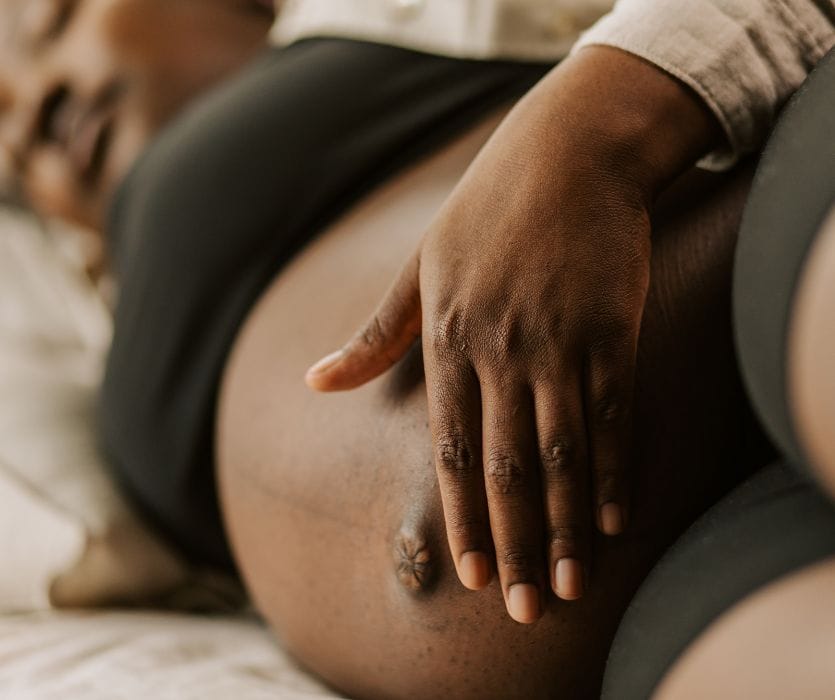If you’re thinking about having another baby after delivering via C-section, the conversation about “trying for a VBAC” will probably come up between you and your doctor, and maybe even when chatting with your family and friends. If you’ve never heard the term before, or even if you have but are a little fuzzy on the details, here’s some information to help you make an informed decision about attempting a VBAC when the time comes.
What does ‘VBAC’ mean?
If you’re like me, the first time you heard someone mention the term “VBAC”, you pretended to know what it meant and then frantically Googled it later. The acronym “VBAC” stands for “vaginal birth after cesarean”. After someone has had one baby via C-section, having a vaginal birth becomes a little more of a “thing”, due to complications that can occur. Depending on your personal circumstances, it’s likely very possible to have a VBAC. In fact, 70% of women who try for a VBAC have done so successfully.
What does TOLAC mean?
Consider this your crash course in pregnancy-related acronyms. The term “TOLAC” stands for “trial of labor after cesarean”. A TOLAC gets to graduate to a VBAC if your baby ends up being born via vaginal delivery. If your TOLAC results in a C-section, it becomes a CBAC (cesarean birth after cesarean). Whew.
How does a VBAC work?
Basically, a VBAC works just like your classic vaginal birth. Once you go into labor, you follow the same steps you may have gone through in your previous birth experience (well, up until the point where you had to have a C-section, anyway). A home birth is probably not gonna be in the cards this time around, as its likely your baby’s heart rate will need to be continuously monitored and you’ll need be ready to go for a C-section if any complications arise.
Is it safer than repeat cesarean?
Honestly, it depends on you and your medical history, which will help your doctor to decide on a recommendation for which route will be safest for you and your baby to take.
What are the benefits?
As with any type of major surgery, repeat cesareans come with their own set of risks, with infection, excessive bleeding and blood clotting being a few. Injury to your abdominal organs is also a complication that can occur any time scalpels are digging around in your midsection. The risks associated with C-sections also increase after your third surgery and become very risky after a fourth. If you plan to have more than three pregnancies, trying for VBAC can help to avoid serious complications such as placenta previa or placenta accrete.
What are the risks?
There are risks associated with VBAC as well, although they are pretty rare. Because your uterus will have a scar where it was previously cut, there is a chance that the scar can split open due to the pressure of your contractions. This happens in only 1% of VBACs, but when it does, not only will you end up having an emergency C-section, but you can be at risk for hemorrhage and the removal of your uterus, meaning you won’t be able to get pregnant again.
What can decrease my chances of a VBAC?
You can try to slip the doctor a 20, but it won’t make a difference if you have certain health factors that make a VBAC a little too risky for you and your baby. The following factors are considered no bueno when it comes to trying for a VBAC:
- You’ve previously had a C-section scar that’s ruptured
- You’ve had prior uterine surgery
- You’ve got a vertical C-section scar (they are more likely to rupture)
- You’ve had more than two prior C-sections
- You have a BMI of 40 or higher
- You’re pregnant with more than two babies
- You’re of “advanced maternal age”
- You’ve had a baby in the last 18 months
- You have preeclampsia
- You’re over 40 weeks pregnant
- You’re experiencing stalled labor
On the other hand, the best indicator that you’ll have a successful VBAC is if you have previously had a vaginal delivery before you had a C-section. If your previous C-section was due to factors like your baby’s size or position being breech, you may also get the green light for a VBAC.
Is a VBAC worth it?
For some moms, a vaginal birth experience is important and deserves to at least be attempted if it’s safe to do so. The shorter recovery time of a vaginal birth also can make a VBAC feel like a preferable option to having another C-section. That said, there’s really no easy way to get a person out of you so you’re probably best going with a childbirth experience that keeps both of you safe and healthy.
Did you try for a VBAC? Or are you on team CBAC? We wanna hear your stories, so make sure to drop them in the comments
You may also like: VBAC Success: Birth Story Part 2




Leave a Comment